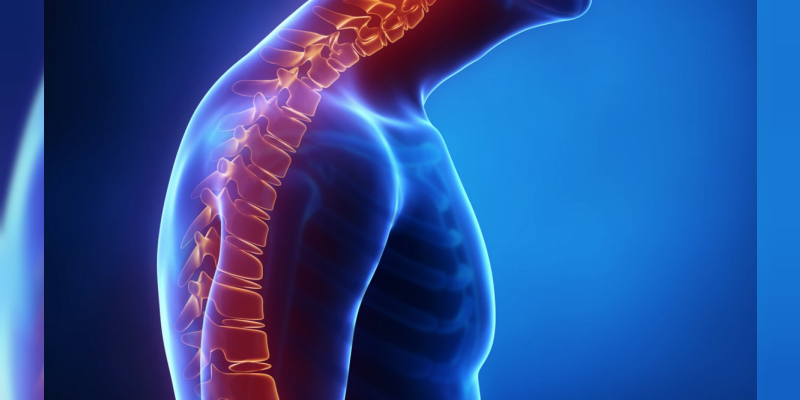Kyphosis is an abnormal rounding of the spine. This disease which is mostly seen in the back is evaluated according to rounding degree. Kyphosis (Roundback) in the back is evaluated as normal up to a certain degree and treatment should be applied to provide control if the rounding is 50 degrees or more. Kyphosis which generally develops depending on standing disorder can be caused by a trauma or can be congenital. It can be seen at every age and should be taken under control with early stages. Kyphosis causes many psychological problems as well as health problems. Kyphosis which is a medical condition in which the spine protrudes may cause spine deformation if it is not treated. Severe pain may occur in the back due to weak back muscles.
Causes of Kyphosis
- Fractures in the spine after a trauma,
- Osteoporosis (A disease caused by dilution of protein density in the bone due to a disorder in the bone metabolism and causing the bone fracture easily, osteolysis.)
- Standing disorder (It causes pain in the back, waist, and neck.)
- Inflammation may be seen around the spine.
If kyphosis is not taken under control with treatment, it causes pain as well as nerve compression in the future. If it is not treated in the early stages, it damages internal organs in addition to back and waist. Deformations occurring in the chest begin to compress the heart and lungs and damage the oxygen and blood flow. Scoliosis may cause herniated disc, back herniation and osteoarthritis as it increases the hole in the waist.
Symptoms of Kyphosis
- Bending of the spine forward,
- Mild or severe back pain,
- Difficulty in standing straight and looking straight,
In kyphosis, as the spine is bending, the muscles in the front area of the body are very tense and muscles at the back are very weak. With exercises, tense muscles can be relaxed and weak muscles can be strengthened. Kyphosis is not seen in those who have strong waist muscles and work with heavy objects.
Kyphosis Diagnosis and Treatment Methods
Roundness in normal standing and advanced roundness are determined by measuring kyphosis degree. Kyphosis degree is very important for determining the treatment to be applied. If the scoliosis is up to 50 degrees, increase in the curve is prevented with exercises, standing and sitting straight techniques, strengthening abdominal and back muscles, repetitive physiotherapy applications, and bending can be corrected. If the bending is more than 50 degrees, increase in the bending is tried to be prevented with kyphosis corset and exercises. In scoliosis with 75 degrees and more, surgery should be definitely carried out. After the surgery which is carried out for severe scoliosis, the patient stands up next day and discharged within 5-7 days. Discharged patients may be required to use corset for a short time.








